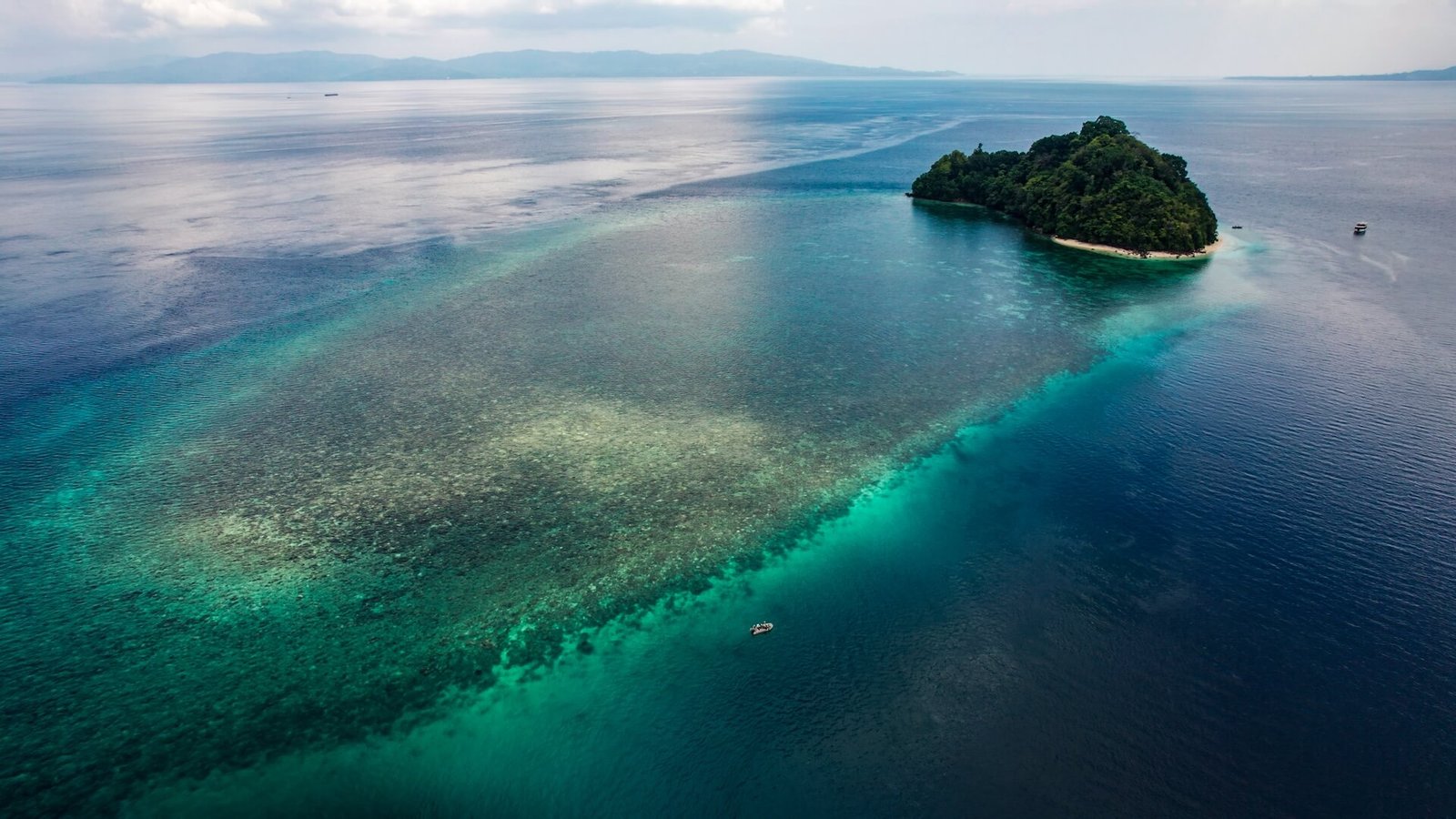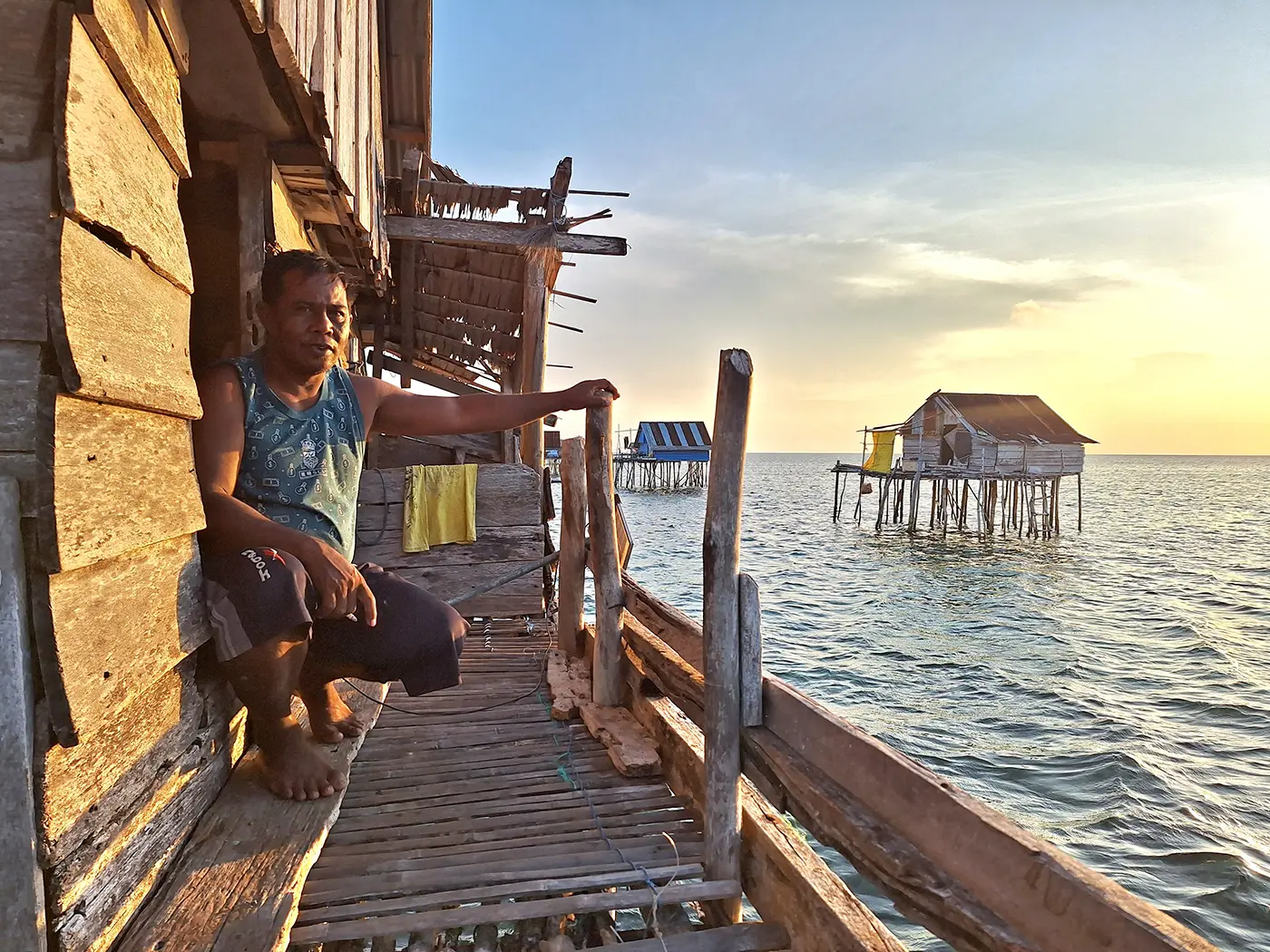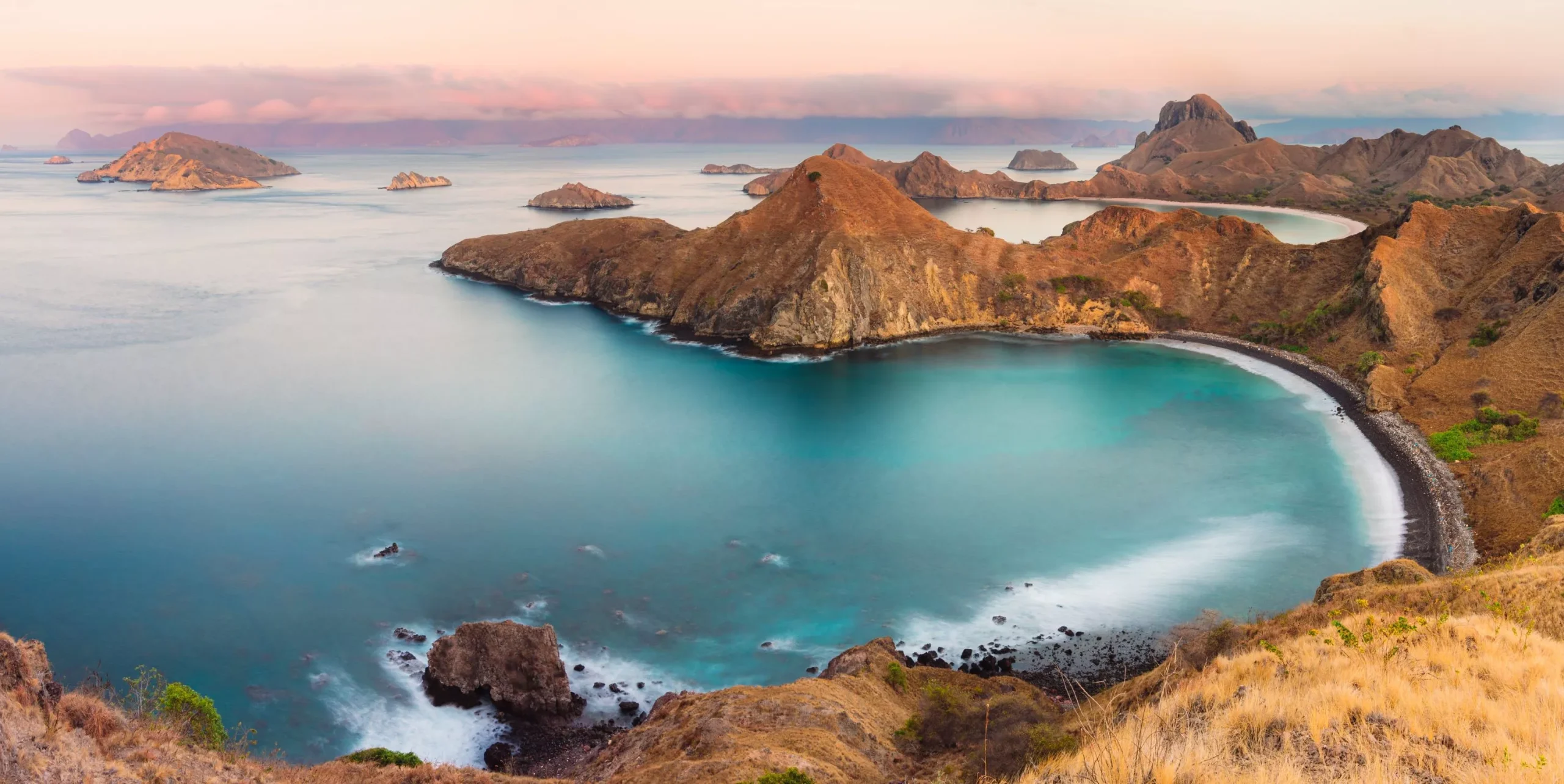Sailing Through Time
Before steel hulls and solar panels, the seas of Indonesia were sailed by wooden ships, handmade by the Bugis people—seasoned merchant seafarers from the islands of Sulawesi. Long before European explorers arrived, these skilled mariners had charted routes across Southeast Asia, their square-rigged sailboats carrying spices and goods from one archipelago to another. Over time, those same hands evolved their vessels from simple sailing craft to the elegant, iconic Pinisi—Indonesia’s most recognised sailing ship.
It’s in this spirit of heritage and ingenuity that the Bugis and the Bajau—Nomad Archipelago’s eco-friendly liveaboards—were brought to life.
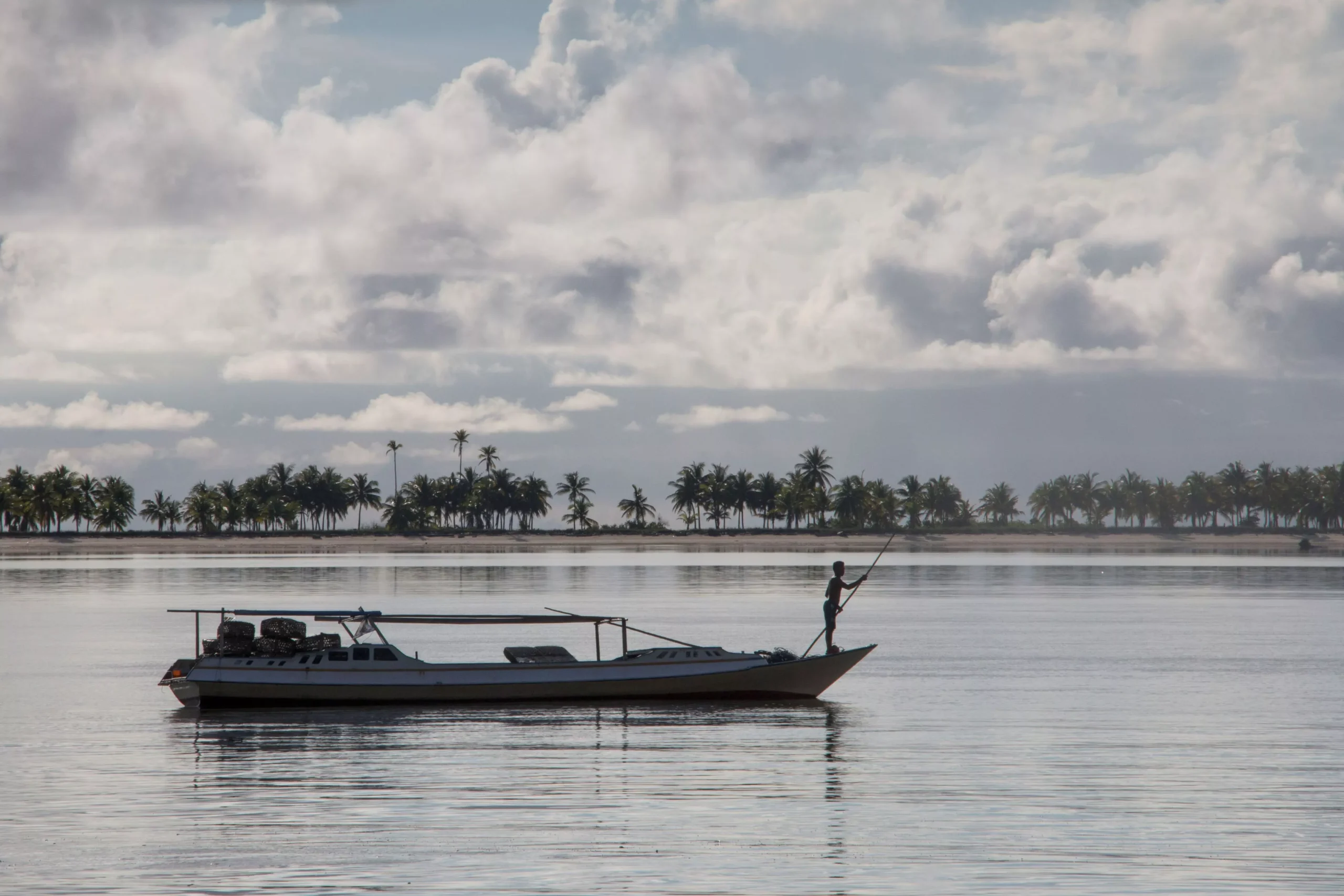
Crafted by Hand, Guided by Heritage
The journey began not with blueprints, but with a deep respect for local knowledge. Though modern tools now hum alongside the rhythms of traditional boatbuilding—electric planers, chainsaws, drills—much of the work is still done by hand. Axes, chisels, and wooden mallets shape the hulls. Frames are fitted with precision, reinforced with galvanised steel bolts. It’s a process passed down through generations, where fathers work beside sons, and a shared history is embedded into every plank of sustainably sourced ironwood.
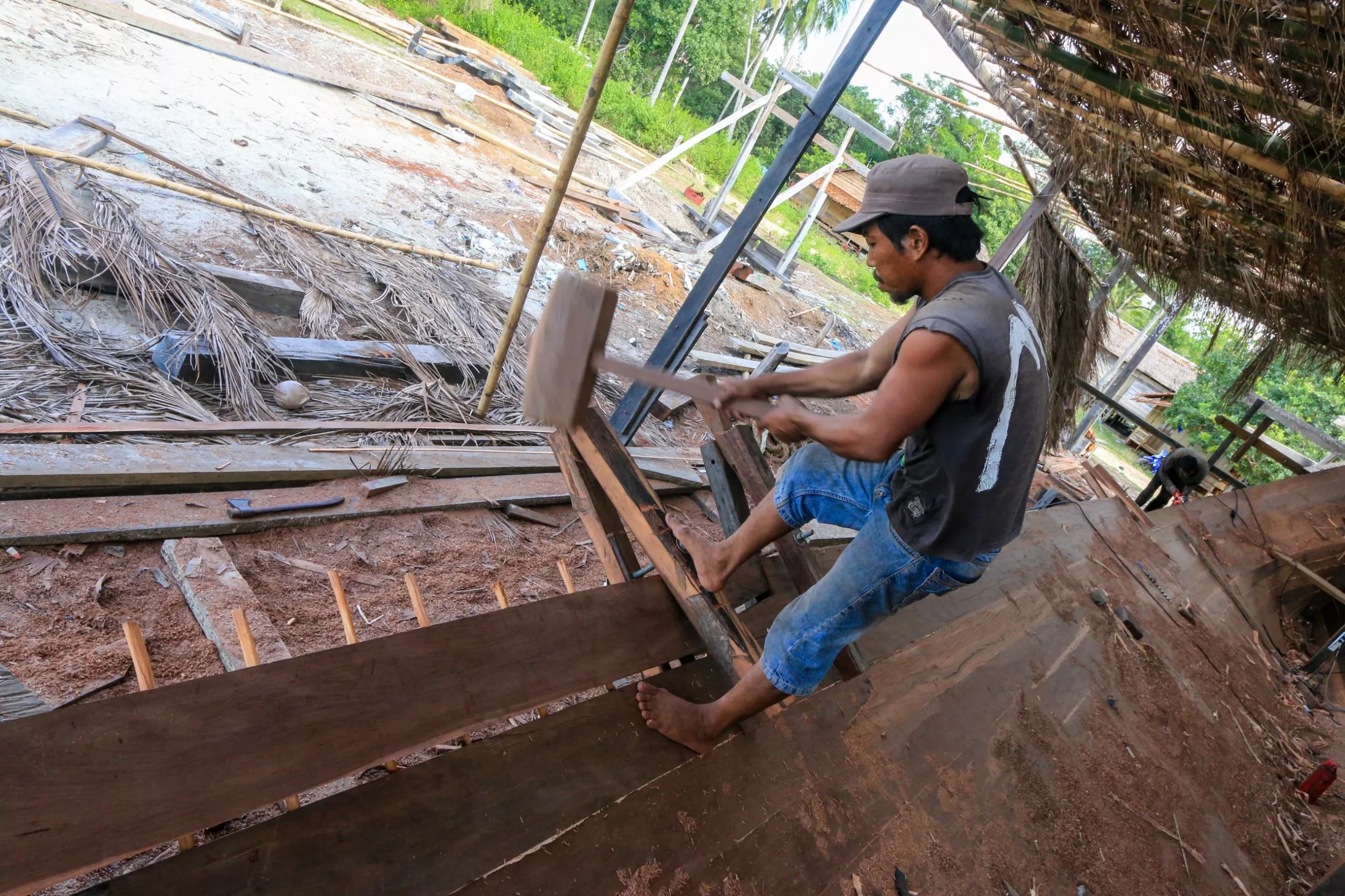
Rooted in Function, Refined for Purpose
The vessels themselves are built from a design rooted in the region’s working boats: small, sturdy trawlers used for fishing trips that stretch over days, designed for speed, shallow anchoring, and navigating the varied coastline of Indonesia. That same hull now supports something new—a boat made not just for purpose, but for presence. One that floats lightly and operates quietly, treading gently on the waters it explores.
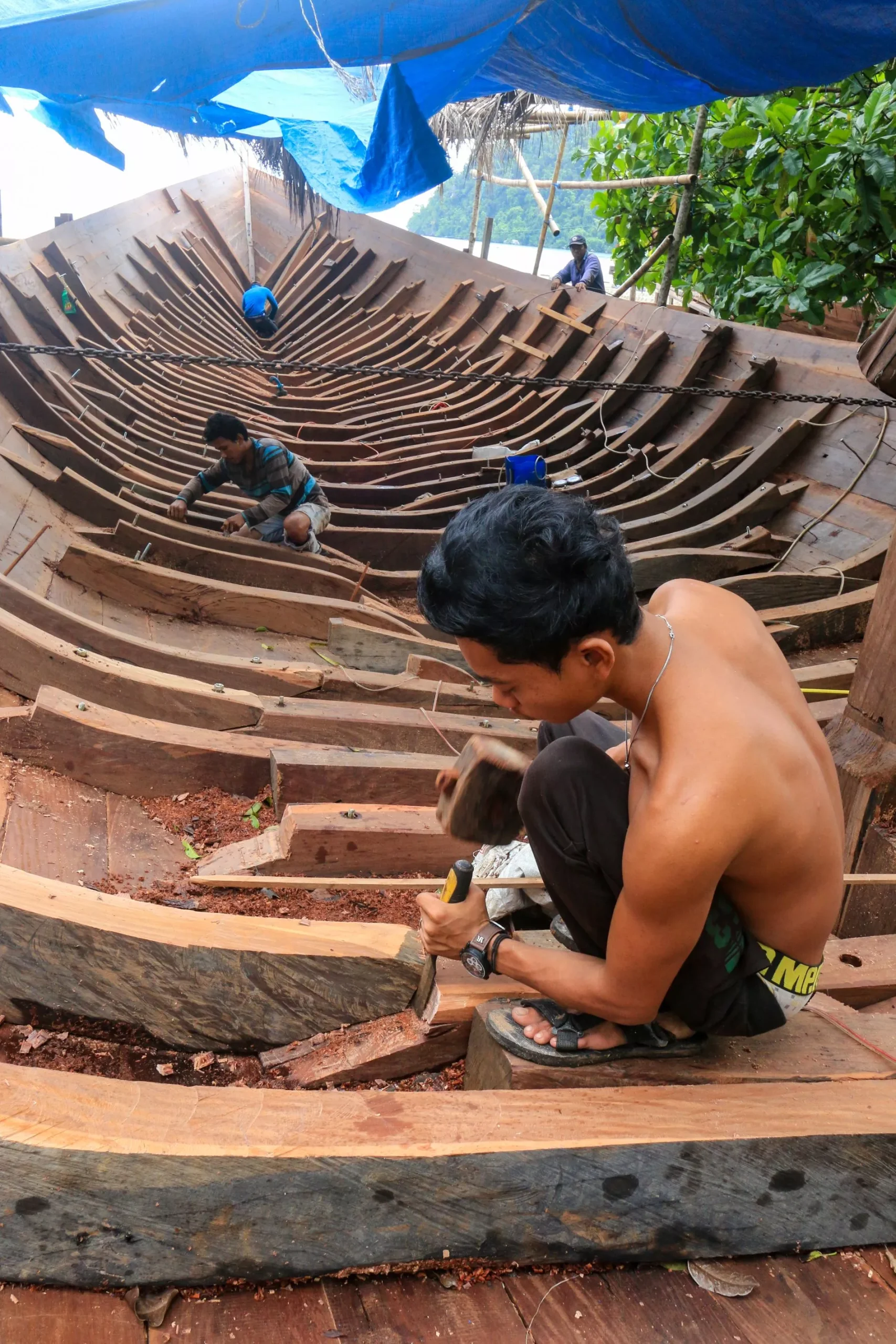
Tradition Meets Thoughtful Innovation
Nomad Archipelago worked closely with local Sulawesi boatbuilders and naval architect Guillaume Chaussade to adapt this traditional hull into a vessel for modern, sustainable cruising. Measuring 27 metres (89 feet), the Bajau and Bugis carry a subtle elegance in their silhouette: a wide deck plan, gently sloped bow, and that unmistakable funnel integrated into the superstructure.
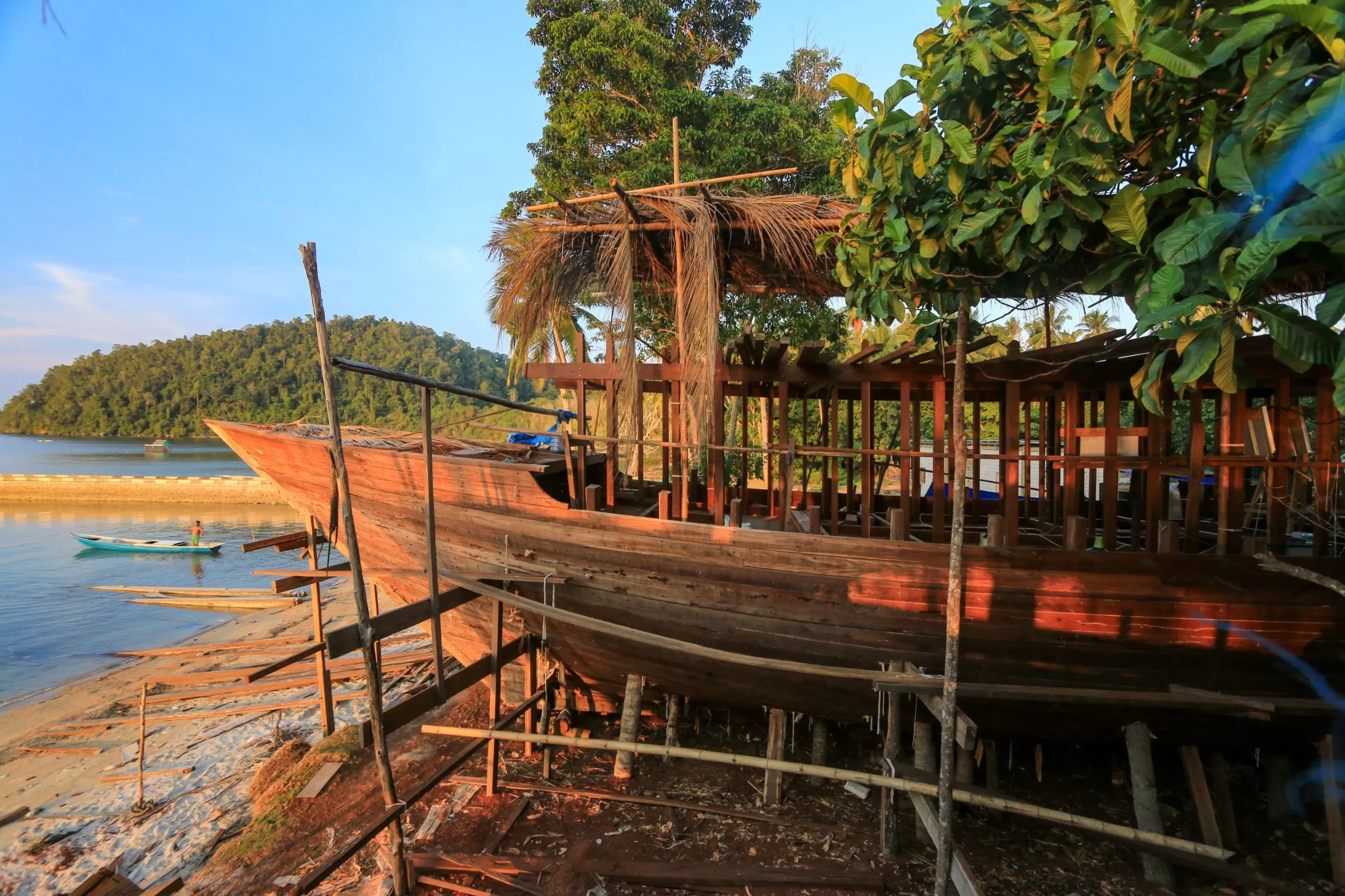
A Design That Brings You Closer
Above all, these boats were designed for connection—with nature, with community, and with each other. Their open layouts allow for panoramic views, with thoughtful flow between shaded lounges, sun decks, and quiet corners. There are dedicated spaces for snorkel gear, paddleboards and kayaks, as well as an integrated dive room. Cabins are all above deck, airy and simple, with en-suite bathrooms and large windows that invite in natural light and sea breezes.
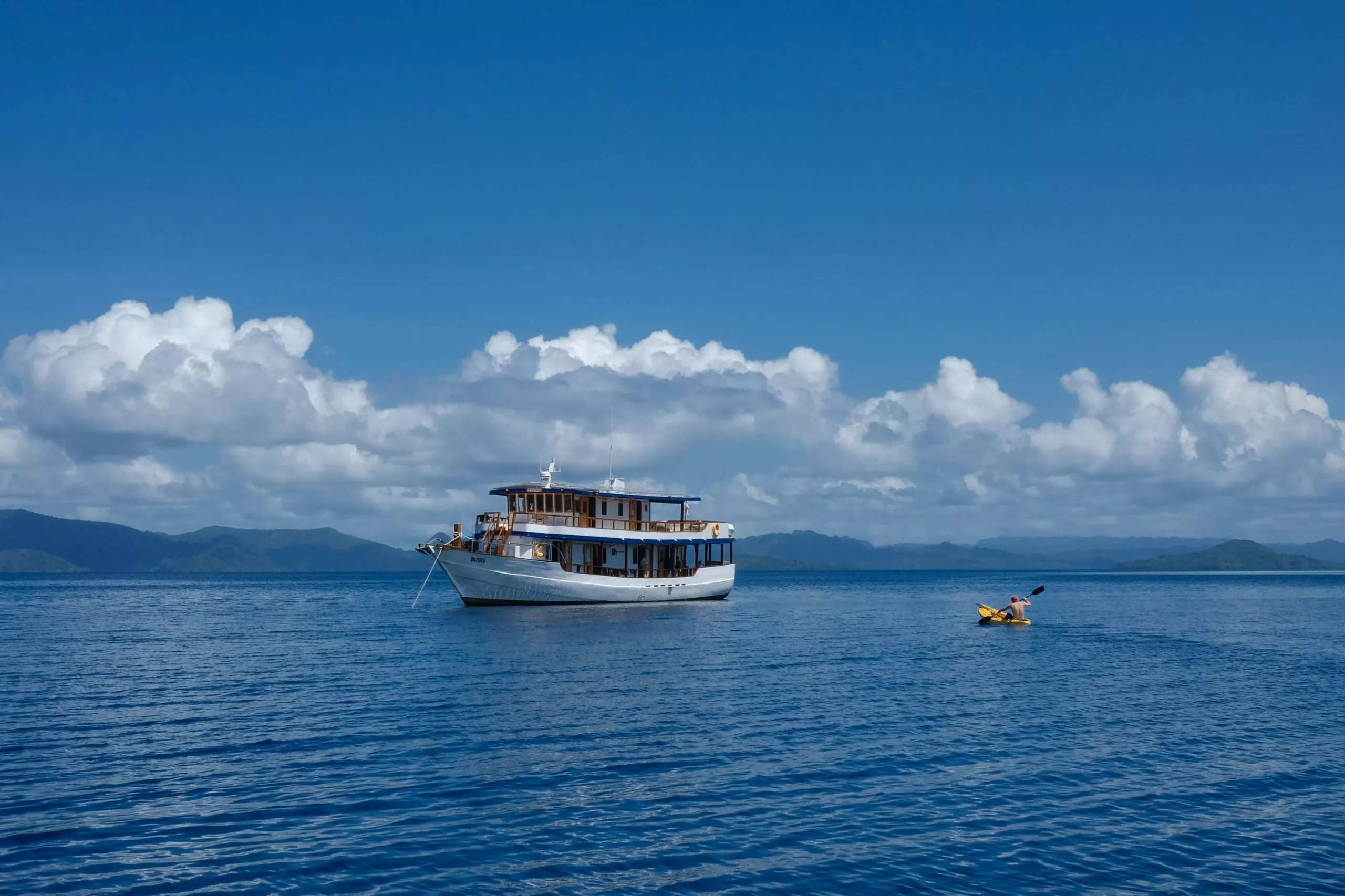
Quietly Sustainable
But it’s what you don’t see—or hear—that makes the biggest difference. At anchor, the boats switch entirely to solar power. There are no rumbling generators, just the sound of water against the hull, the breeze through the palms, and conversations carrying softly across the deck. Water is produced onboard through desalinisation systems, eliminating the need for plastic bottles. Local produce—fruits, vegetables, seafood—is sourced along the journey, supporting small communities and offering meals shaped by place and season.
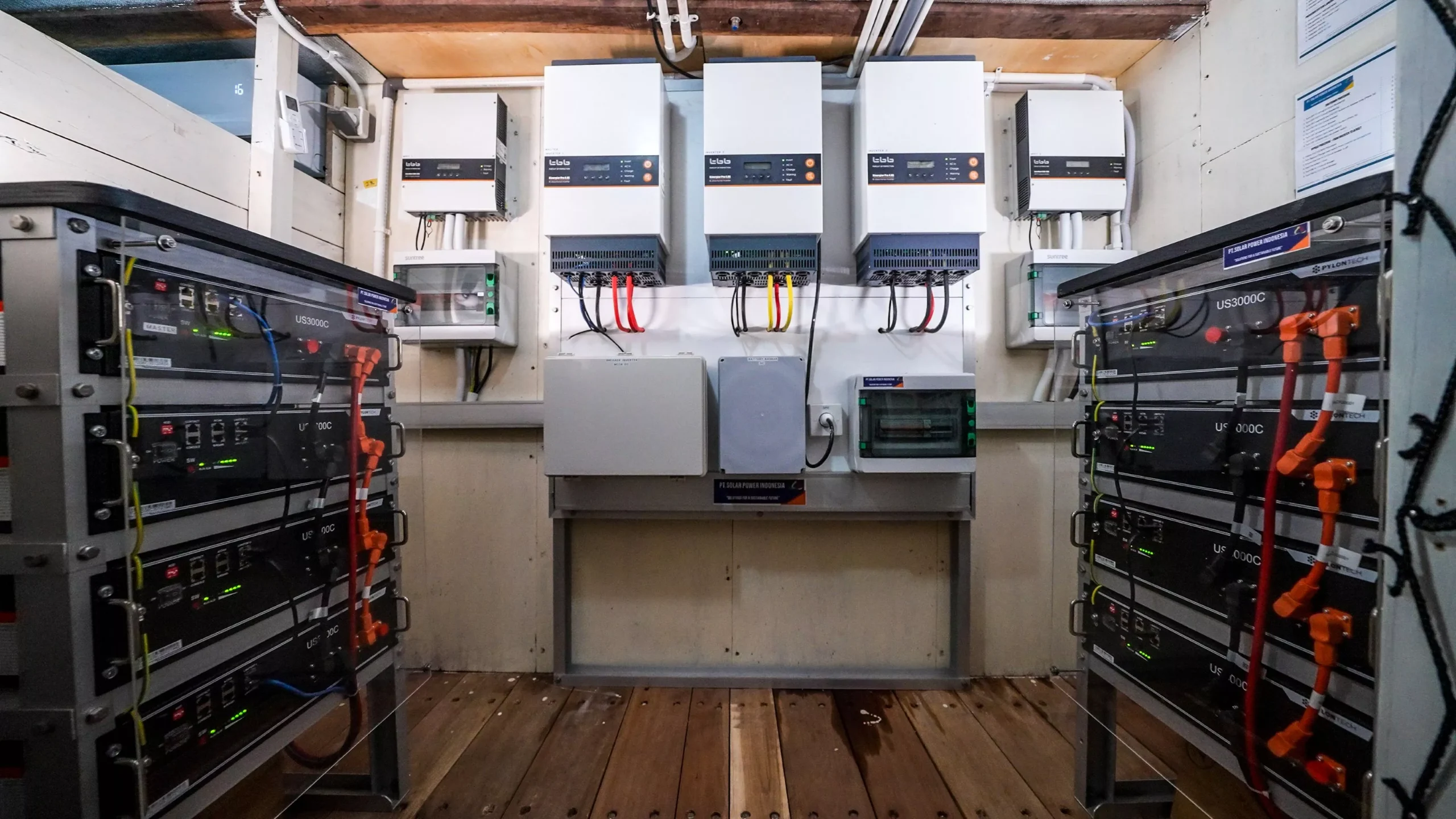
A New Way to Cruise Indonesia
The Bajau and Bugis are more than vessels; they’re quiet statements of what responsible travel can be. Born from time-honoured skill, crafted with intention, and operated with care, they offer a rare way to journey across Indonesia’s waters—slowly, respectfully, and in rhythm with the world around them.
